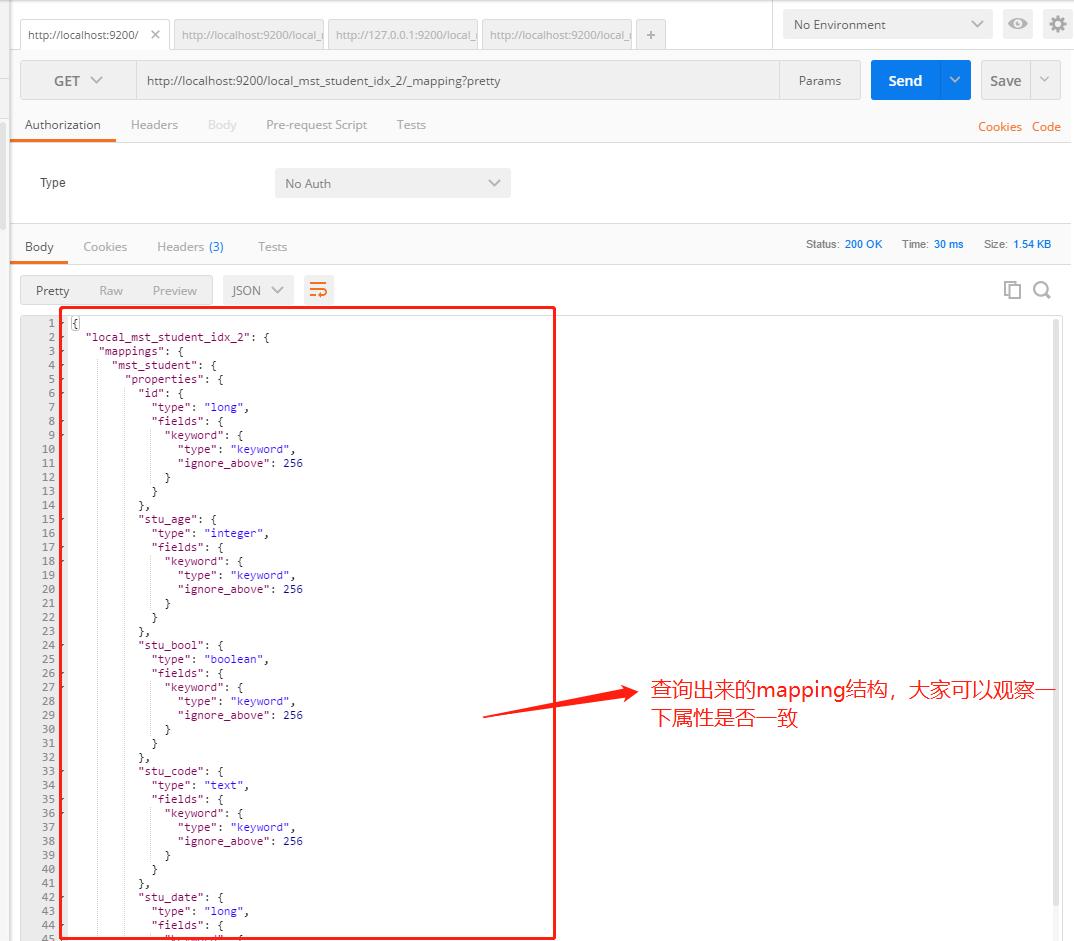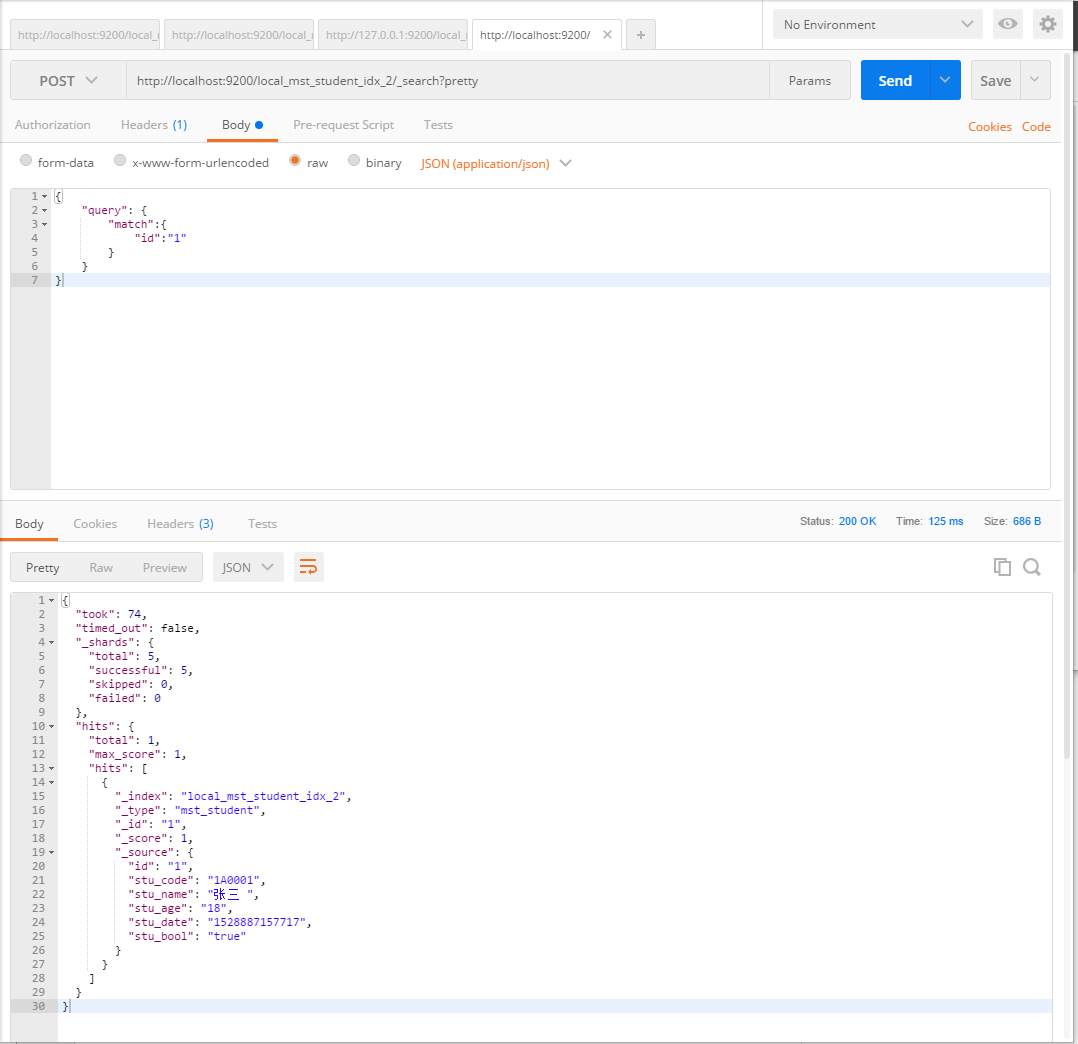Of course, I don't write about the installation of ES in detail. Baidu has a lot of them. I use 6.2.3 version now.
1. After ES is installed, we start to create indexes and mapping;
--PUT http://localhost:9200/local_mst_student_idx_1 local_mst_student_idx_1:Represents the index name. mappings: { "mappings":{ "mst_student":{ "properties":{ "id":{ "type":"long", "fields":{ "keyword":{ "type":"keyword", "ignore_above":256 } } }, "stu_code":{ "type":"text", "fields":{ "keyword":{ "type":"keyword", "ignore_above":256 } } }, "stu_name":{ "type":"text", "fields":{ "keyword":{ "type":"keyword", "ignore_above":256 } } }, "stu_age":{ "type":"integer", "fields":{ "keyword":{ "type":"keyword", "ignore_above":256 } } }, "stu_date":{ "type":"long", "fields":{ "keyword":{ "type":"keyword", "ignore_above":256 } } }, "stu_bool":{ "type":"boolean", "fields":{ "keyword":{ "type":"keyword", "ignore_above":256 } } } } } } }
After the mapping is created, we can check whether the mapping already exists in ES:
--Get http://localhost:9200/local_mst_student_idx_2/_mapping?pretty

After confirmation, we start to add new operations;
--Post http://127.0.0.1:9200/local_mst_student_idx_2/mst_student/1 body Parameters: { "id":"1", "stu_code":"1A0001", "stu_name":"Zhang San ", "stu_age":"18", "stu_date":"1528887157717", "stu_bool":"true" }

How can we view the data we just added after the addition? Next, I will write a query request based on id.
--Post http://localhost:9200/local_mst_student_idx_2/_search?pretty bosy Parameters: { "query":{ "match":{ "id":"1" } } }

I'm going to give you a brief introduction to the parameters returned above; in fact, we only focus on the internal parameter values of hits.
took: is the time taken by the query, in milliseconds.
Time out: indicates whether the query times out.
_Shards: describes how many shards are queried, the number of successful shards, and the number of failed Shards.
hits: search results. Total is the total number of satisfied documents. hits is the actual number returned (default is 10).
_Score is the score information of documents, which is related to ranking relevance. It is easy to understand by referring to the search results of major search engines.
total:1; (represents that there is only one piece of data in the current ES. No matter what request you send, ES will return the total)
_Index: we specify the index of the query (similar to a database).
_type: we specify the document to query (similar to a table in the database)
_id: query the specified id.
_source: query return data.
Give me a compliment after reading the trouble. I will continue to work hard~